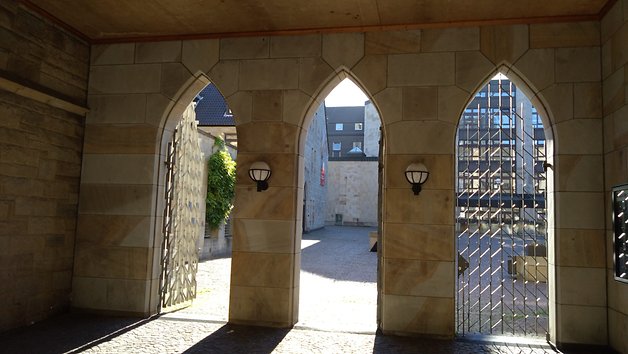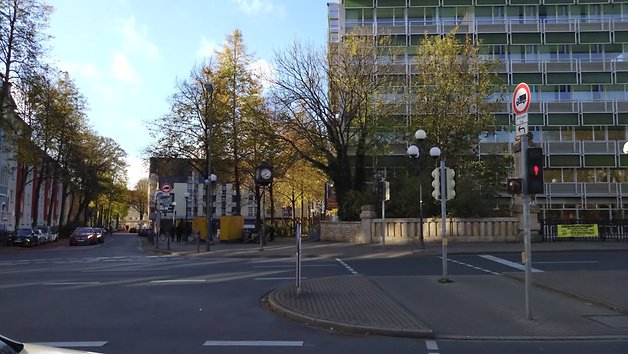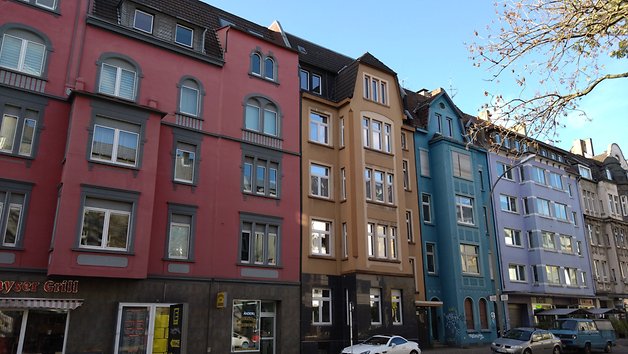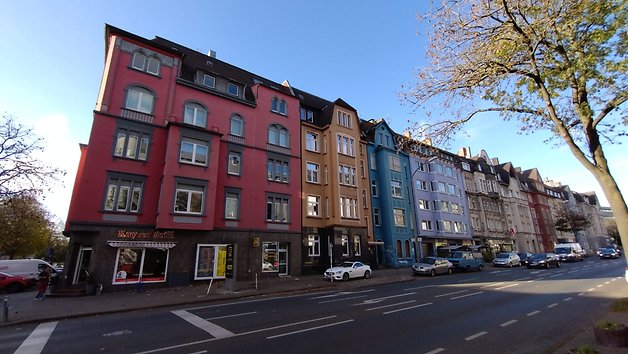Sony Xperia 10 IV review: Compact with a long-lasting battery


Read in other languages:
With 6-inches of screen space, Sony's Xperia 10 IV is rather a compact offering for a smartphone in 2022. Find out what the smartphone has to offer and how it performs among the mid-range contenders in our detailed review.
Good
- Nice feel
- Great display
- Almost pure, stock Android
- Large battery with long battery life
- 3.5 mm audio jack and microSD slot
Bad
- Mediocre camera performance
- Too little performance for this price range
- Neither Quick Charging nor Wireless Charging supported
- No charger included

The Sony Xperia 10 IV in a nutshell
When the Sony Xperia 10 IV was introduced alongside the Xperia 1 IV in the first half of the year, the Japanese company slapped a $495 price on it. This much we know: At that price point, it is way too high for this device! Over the course of time, market forces have come in to correct such an anomaly, where we have see it drop below the $400 mark, which is a far more comfortable price point for the masses.
However, Sony did a lot right with this compact smartphone that measures a mere six inches across diagonally: It is very light despite a huge 5,000 mAh battery, feels great in the hand, and has a similarly good grip. It has IP68 certification, included the much mourned-for 3.5 mm audio jack and microSD card slot, and comes with a very simple, uncluttered Android 12 OS. Compared to the predecessor, Sony now offers optical image stabilization with the main camera, while the Gorilla Glass-Victus-protected OLED panel is also appealing.
Unfortunately, Sony also made a few mistakes: I found the camera performance to be a bit disappointing; I would have expected more than a Snapdragon 695 SoC at this price, there is only a single speaker, and wireless or quick-charging support is not available. The bottom line is, I still like the fact that Sony decided to take a different path compared to the numerous competitors from China.
If you are of the same opinion and are looking for a compact smartphone that is able to last more than a day's worth before seeking out a power outlet, you can either buy it now for between $350 and $385, check out some of the possible Black Friday 2022 bargains.
Design and build
The Sony Xperia 10 IV is a pleasingly slim, compact and waterproof smartphone that tips the scales at just 161 grams while measuring 153 × 67 × 8.3 mm. Despite the plastic back and frame, it made a pleasant, high-quality impression while in the hand .
What I liked:
- Slim, compact, light.
- Very nice haptics.
- Well manufactured.
- IP68 certification.
- 3.5 mm audio jack.
What I disliked:
- Only one speaker.
- Plastic frame.
Immediately after unpacking the device, I noticed how good the Sony Xperia 10 IV felt in the hand. This is partly due to the fact that it is very slim (only 6.7 centimeters) and thus a joy to hold. I also like the matte finish that Sony gave it. Yes, it's only plastic, but it has a really nice texture and still feels very premium.
The choice of material also made the smartphone extremely light, but probably less robust. I would have preferred metal for the frame at the very least. At least Sony used Gorilla Glass Victus for the front. The smartphone is also waterproof, which is indicated by the IP68 certification. It is also great that Sony still offers a 3.5 mm audio jack. You can also insert a memory card into the SIM card slot for expansion purposes.

The Japanese company did several things a bit differently compared to the competition - which is definitely a plus point, since by doing so, they stand apart from the China-made devices. For example, the SIM or microSD card can be inserted without requiring a tool as the drawer can be opened, just like that!
By the way, your fingerprint sensor is located on the side instead of being integrated into the display. I read somewhere that it only offers mediocre reaction time, but I could not determine any such weakness myself during the review. Sure, it could be a wee bit faster, but it unlocked very reliably.

Since there is nothing to criticize about the build quality, there is only one point I would like to talk about - the design. I would have loved to have two speakers. Apart from that, the Sony Xperia 10 IV is a real eye-catcher due to its simplicity. Perhaps that is also due to the color of my review sample: Sony gave me the mint green model, but you can also choose from black, white, or lavender.
Display
The 6-inch OLED display comes in a 21:9 format and offers an FHD+ resolution of 2,520 x 1,080 pixels. Thus, Sony pretty much does everything right here - if only it were not for the refresh rate ...
What I liked:
- Beautiful OLED display with high contrast and crisp colors.
- High pixel density.
What I disliked:
- Only 60 Hz refresh rate.
- Bezels are a bit too thick.
Sony could have easily earned a 1-star rating for the display. The OLED panel works great with vivid colors and high contrast levels. Sony has even improved the brightness so that the device is still quite legible when used under the sun. Colors do not fade when you look at the device from an angle, and the screen's small size results in a high pixel density of 457 ppi.

Unfortunately, it is a common thread throughout the entire review that Sony always does many things right, but unfortunately also does some things wrong. For example, I can't understand why a $500 smartphone can't be given a refresh rate of 90 hertz at the very least. So, you will have to make do with 60 hertz here and yes, you'll definitely notice that when scrolling through longer web pages.
I also included thick bezels as part of the things that I disliked, but that is due to my personal perferemce. Maybe others are all right with the slightly thicker forehead and chin areas. At least Sony does not need an ugly notch or a punch hole to hide the selfie cam, as it fits comfortably in the upper bezel.
Software: Clean as a whistle
Those who like stock Android will get along well with Sony's Xperia 10 IV right away. What is less desirable would be the software support.
What I liked:
- Almost stock Android.
- No bloatware.
What I disliked:
- Only two major Android updates.
Regarding the software, I will keep it pleasantly short. There is simply not much to say about an interface that almost feels like stock Android 12. I like simple, tidy, clear interfaces and am therefore quite happy with what Sony offered here. The Japanese have also largely dispensed with bloatware; only a few apps like Facebook and LinkedIn come preinstalled on the device.
Unfortunately, Sony's software support is less praiseworthy. The security updates are often a few months behind. I currently have an update from the beginning of October. I will continue to be sporadically supplied with security patches for three years, and then it's over. Sony is also a laggard performer when it comes to Android versions by offering just two major updates - so as soon as Android 13 arrives on the device, there is only one major operating system update to look forward to before you start falling behind.
Performance: Sony in So-La-La Land
Sony packed a Snapdragon 675 5G into this mid-range model and gave it just one version - 6 GB of RAM and 128 GB of expandable memory.
What I liked:
- Memory is expandable via microSD.
- 5G, olé!
- No excessive heat development.
What I disliked:
- Middling performance with the Snapdragon 675.
- Only Bluetooth 5.1 and Wi-Fi 5 connectivity.
The Sony Xperia 10 IV is not a high-performance pocket rocket for sure. It is more like a horse that only jumps as high as it has to - and sometimes refuses to jump. What do I mean by that? The SoC is probably sufficient to perform everyday tasks quite reliably. You can even play games reasonably well with the device if you are willing to make compromises in the graphical settings.
The question is whether that is the requirement for a $500 device, where you need to tweak individual apps and games to make sure that they run as smoothly as possible? Overall, I feel that the performance of the Motorola Edge 30 Neo was a bit better despite having an identical chipset. Both devices are on par in the Wild Life benchmark tests, but Geekbench 5 confirmed my impression.
| Sony Xperia 10 IV | Motorola Edge 30 Neo | Samsung Galaxy A53 | Xiaomi Redmi Note 11 Pro | Google Pixel 6a | |
|---|---|---|---|---|---|
| 3D Mark Wild Life | 1,217 | 1,205 | 2,280 | 1,096 | 5,762 |
| 3D Mark Wild Life Stress Test | Best loop: 1,216 Worst loop: 1,208 |
Best loop: 1,208 Worst loop: 1,109 |
Best loop: 2,298 Worst loop: 2,293 |
Best loop: 1,099 Worst loop: 1,094 |
Best loop: 4,941 Worst loop: 2,860 |
| Geekbench 5 | Single: 663 Multi: 1,826 |
Single: 1,208 Multi: 4,310 |
Single: 1.155 Multi: 3,356 |
Single: 505 Multi: 1,754 |
Single: 1,038 Multi: 2,890 |
Even though the performance is easily sufficient for most applications today, but you should bear in mind that you might also plan to use the device for two to three years.
Otherwise, there is not much exciting to report. You will be able to take advantage of 5G networks and of course NFC, but you will be limited to just Wi-Fi 5 and Bluetooth 5.1 connectivity standards. I would have preferred more up-to-date versions.
Camera:
12 MP wide-angle camera, 8 MP ultra-wide angle camera, and an 8 MP telephoto camera with dual optical zoom: That sounds pretty much exactly like the camera setup of its predecessor. What is new, however, is the presence of optical image stabilization.
What I liked:
- Very realistic color reproduction.
- Main camera with optical image stabilization.
- Decent 8 MP telephoto camera with 2x zoom.
What I disliked:
- Overall below-average camera performance.
- Sluggish camera app.
I have the feeling that in this price range, you will read the following sentence over and over again: "In bright daylight, you can achieve really good results with the main camera". You can apply this sentence like a template to almost every review of cheaper smartphones. The sentence also fits here in the Xperia 10 IV, although I expected a bit more in view of the price.
Basically, Sony presents us with the same camera setup as in the predecessor, Sony's Xperia 10 III, as mentioned above. The triple camera is once again led by a 12 MP camera with f1.8 aperture. The other two cameras - ultra-wide angle and telephoto, still rely on 8 MP sensors. What is new compared to last year's model is that the pictures of the main camera are now optically stabilized.

I really liked the colors that you capture with the Xperia 10 IV. While many of the Chinese smartphones push the envelope, this Sony handset is rather restrained. This means that you get very accurate colors instead of overly gaudy ones. This can lead to very nice results, especially in sunny conditions.
- Be sure to also check out our overview of the best camera smartphones of 2022.
But (and you knew there was a "but" coming, right?) I also felt like the device struggled a bit with exposure too often. Peruse the photo gallery and tell me whether you feel the same way I do once you're done. And while you're at it, pay attention to the detail, because I'm not very happy with that either. Especially when I look at the trees in the photos, the images don't seem very detailed and sharp to me. Of course, the worse the lighting is, the noisier the photos become.
You can imagine that this doesn't get any better if you want to shoot photos at night. Say goodbye to the idea that the Xperia 10 IV is the right device if your passion is night photography. To be honest, I had hoped that Sony's camera experts would also deliver in the mid-range market, but overall, the camera system is very average.
Let's briefly touch on the camera's other qualities: Videos naturally benefit from optical image stabilization and you can expect decent results here. However, the end result is still limited to Full HD resolution at 60 fps. The selfie camera has a 8 MP resolution and does exactly what it is supposed to do on a level that is absolutely clear.
That leaves the app itself. Methinks we once again find that the processor is a bit lame as I felt the app launched rather slowly. I also had the feeling that the processed photo should be completed faster after taking it. However, let us not make a mountain out of a molehill, shall we?
Battery: Runs long, charges long
Sony's Xperia 10 IV hides a fat 5,000 mAh battery in its compact innards. You can comfortably get through the day with it. Unfortunately, there is neither a fast charging function nor wireless charging option.
What I liked:
- Large battery capacity with long runtime.
What I disliked:
- Charges very slowly.
- No wireless charging.
- Neither charger nor charging cable included in the package.
Looking at the top of my pros and cons list, I see one pro and three cons. That sounds bad, doesn't it? Not really, it's not that bad at all. On the contrary: The exceptionally good battery life is even one of the smartphone's highlights. Although it only weighs 161 grams, Sony accommodates a fat 5,000 mAh battery in the Xperia 10 IV, which will get you through the day without any battery anxiety.
I will even go further out on a limb: You have to stretch yourself a lot to make sure that the battery dies after one day of intensive use. If you use your smartphone moderately, you will not have to look for a power outlet until the second evening.
So, everything is amazing in this respect. Unfortunately, there is also one drawback, or rather, several. I miss having a fast charging function, and inductive charging is unfortunately not possible with the smartphone. Another negative point is how Sony chose not to include a cable or charger in the box.
However, this point is debatable. Since there is no Quick-Charging anyway, it is not a problem to use an existing charger from another manufacturer. And most of us probably have that lying around anyway, right? Besides that, Sony is also committed to sustainability. I don't want to start the green-washing discussion again, but the fact is, it makes more sense for the environment to omit the charger.
Technical data
| Technical data | |
|---|---|
| Product | |
| Image |

|
| Display | 6-inch OLED, 21:9 format, 2,520 x 1,080 pixels (FHD+), 60 hertz refresh rate |
| Dimensions | 153 × 67 × 8.3 mm |
| Weight | 161 g |
| SoC | Qualcomm Snapdragon 695 5G |
| Memory | 6 GB RAM 128 GB ROM, expandable via microSD |
| Software | Android 12 |
| Main camera | 12 MP | f1.8 aperture | 1/2.8" | 79° | OIS |
| Ultra-wide angle camera | 8 MP | f/2.2 aperture | 1/4" | 120° |
| Telephoto camera | 8 MP | f/2.2 aperture | 1/4.4" | 43° | 2x zoom |
| Selfie | 8 MP | f/2.0 | 1/4" |
| Video | FullHD at 30/60 fps |
| Audio | Hi-Res Audio | Single Speaker | 3.5 mm jack connector |
| Battery | 5,000 mAh |
| Charging via cable | Max. 68 W, wireless charging (Qi) |
| IP certification | IP68 |
| Security | Fingerprint sensor on the side of the power button |
| Connectivity | 5G, Wi-Fi 5 (802.11 a/b/g/n/ac), Bluetooth 5.1, NFC, USB-C, A-GPS, GLONASS, Galileo |
| Colors | Black, White, Mint, Lavender |
| Check offer* |
|
Conclusion
This review was a roller coaster ride. It barely went up—Wow, nice AMOLED display—before it started going downhill again—really only 60 Hz?
Up—great battery life— and down—too bad, no quick and wireless charging.
And up again—fine, slim form factor—and down—no second speaker.
I could go on like this forever: Optical image stabilization, but otherwise rather mediocre camera experience. Almost pure Android, but only two major updates and so on.
But somehow, the device still appealed to me. To be honest, I am rather a fan of larger displays. However, the Sony Xperia 10 IV and I have become buddies over the past few weeks. I like the look and feel of the smartphone and I also forgive the slightly wider display edges.

I probably just like that the device makes such a chilled-out impression. It is not about the best camera or the most powerful performance. It is not a mid-range smartphone that is out to smash records. Rather, one that does many things decently and some things really well.
I wrestled with myself and thought about how many stars I wanted to give it. Three and a half or four? You know what? I'm giving it four stars! If it still cost $495, I wouldn't have done that. Seeing how the Xperia 10 IV is currently available for less than $400, with the cheapest offers hovering around $350, I would say that this is a smartphone you should take a closer look at. In fact, it might even make it to our list of best smartphones under $400 Euros.
































































